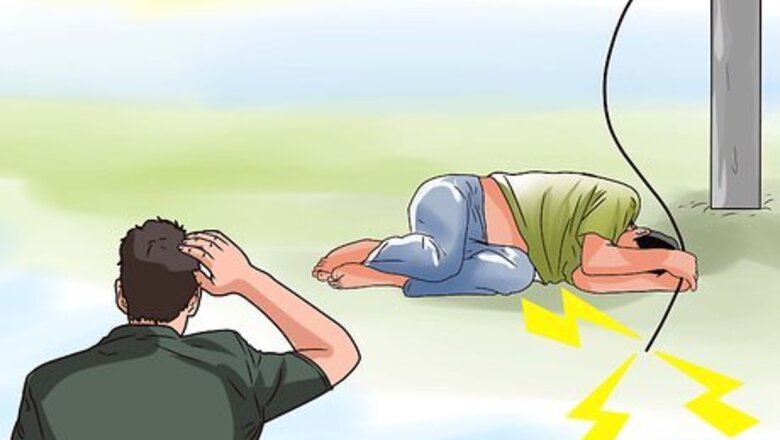
views
Securing the Environment
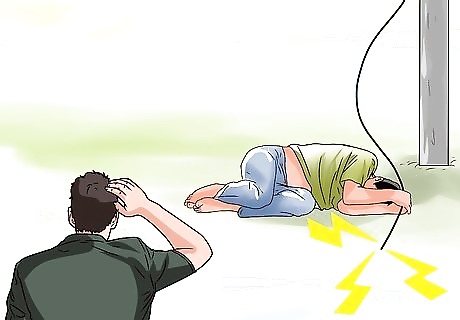
Look over the area of the incident carefully. Rushing in to save someone might be your first impulse, but if the danger of electrical shock remains you will only injure yourself as well. Take a moment to assess the scene and look for any obvious dangers. Check for the source of the electrical shock. Look to see if the victim is still in contact with the source. Don’t touch them—electricity can flow through the victim and into you. Never use water, even if there is a fire, as water can conduct electricity. Never enter an area where electrical equipment is used if the floor is wet. Use a fire extinguisher made for electrical fires. Fire extinguishers for use on electrical fires will be labelled as a C, BC, or ABC extinguisher.
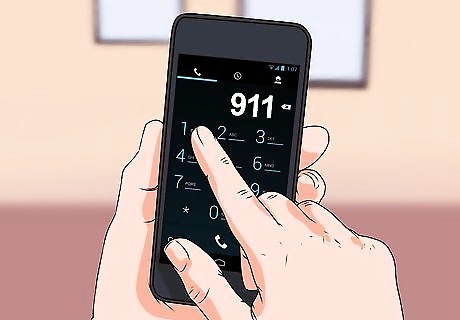
Call emergency services. It is very important that you call as quickly as possible for help. The sooner you call, the sooner help will arrive. Explain your situation as calmly and clearly as you can when you make the call. Explain that the emergency involves an electrical shock so the responders can be best prepared. Try not to panic. Keeping as calm as you can will help you relay the proper information. Speak clearly. Emergency services will need accurate and clear information. Speaking too quickly might lead to misunderstanding, which can waste valuable time. Provide your address and phone number accurately. Most countries have made emergency service numbers easy to remember. Here are a few examples: USA: 911 UK: 999 Australia: 000 Canada: 911
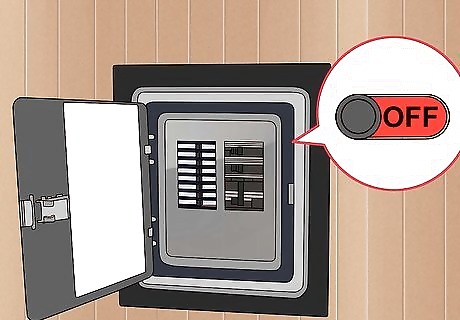
Shut off the current. If you can do so safely, turn off the electrical current. Don’t attempt to rescue someone near a high-voltage line. Shutting off the current at the power box, the circuit breaker or the fuse box is the preferred option. Follow these steps to turn the power off with a circuit breaker box: Open the circuit breaker box. Look for a rectangular block, with a handle, at the top of the fuse box. Grab the handle and flip it to the other side, just like a light switch. Try turning on a light or other electrical device to double check the power is off.

Separate the victim from the source. Don’t touch the victim, even with a non-conducting instrument, if the electricity hasn’t been shut off. Once you’re sure there is no current, use a rubber or wooden stick, or any other non-conducting tool, to separate the victim from the source. Examples of non-conducting materials include glass, porcelain, plastic and paper. Cardboard is another common, non-conducting material that you may use. Conductors, which allow electricity to flow, include copper, aluminium, gold and silver. If the victim has been hit by lightning, they are safe to touch.
Assisting the Victim

Place the victim in the recovery position. Placing the victim of electrical shock in the recovery position will ensure that their airway remains clear. Follow these steps to properly put the victim in the recovery position: Place the arm nearest to you at a right angle with their body. Place the other hand under the side of their head. The back of the hand should touch the cheek. Bend the farthest knee at a right angle. Roll the victim on the side. The top arm will support the head. Lift the chin of the victim and check the airway. Stay with the victim and monitor their breathing. Once in the recovery position, don’t move the victim, as this can cause further injury.
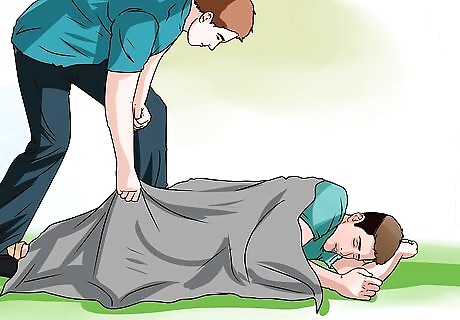
Cover the victim in a blanket. The victim will quickly cool down. If possible, wrap them in a thermal blanket to keep their body temperature regulated. Wait for the emergency services with the victim. Don’t cover the body if there are large wounds or untreated burns. Be gentle when you place the blanket over them. When emergency services arrive, give them what details you have. Explain very quickly the source of the danger. Notify them of any wounds you've noticed and the time of the accident. Don't try to interfere once they take over.

Talk to the victim. Try talking with the victim to learn more about their state. You will be able to better help by learning as much as you can. Pay careful attention to any responses and be ready to relay them to emergency services when they arrive. Identify yourself and ask the victim what happened. Ask whether the victim has trouble breathing and if she is experiencing any pain. Ask where sources of pain are located. This may identify any wounds or burns. If the victim is unconscious, check the airway and listen for breathing.

Control any bleeding. If the victim is bleeding, try to stop or slow blood loss. Use non-adhesive dressing to apply direct pressure. Continue pressing until the bleeding stops. Do not remove the cloth if soaked with blood, add more layers to it. Elevate the bleeding limb higher than the heart. Do not move the limb if you suspect a fracture. Once bleeding stops, wrap the cloth in a bandage to secure it in place. Wait for emergency services to arrive and inform them of the injury and what you have done to treat it.
Take measures to prevent shock. After a serious accident or injury, the victim may go into shock. To help prevent this, lay the victim flat on their back. Elevate their feet by about 12 inches (30 cm).
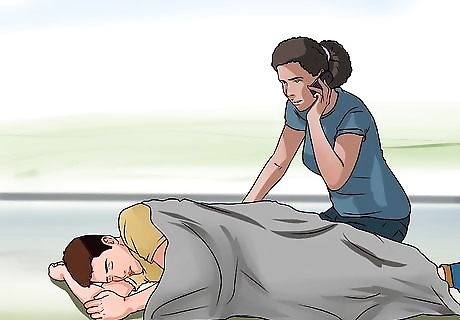
Call emergency services back if the victim’s status worsens. If you notice any change in the victim’s condition or if you spot any new wounds, call emergency services again for further instructions. Keeping emergency services up to date will help them respond better. If the condition worsens, the operator might prioritize your situation. If the victim stops breathing, the operator might tell you how to perform CPR. Don’t panic, and follow any instructions you are given.
Performing CPR Safely Without Training
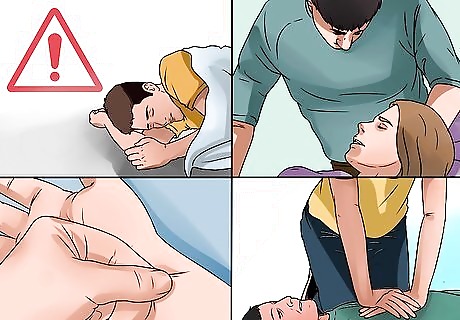
Assess the victim for signs of disability. Although medical professionals will assess the victim for signs of disability, you may find it helpful to identify the victim’s level of responsiveness and pass this information on to the emergency response team. Disability is often graded as one of four categories: A for alert. This means that the victim is awake, able to talk, and aware of their surroundings. V for voice responsive. This means that the victim can respond to questions, but not seem too alert or aware of what is going on. P for pain responsive. This means that the victim is showing some sort of response to the pain. U for unresponsive. This means that the patient is unconscious and not responding to questions or reacting to pain. If the victim is unconscious, you may proceed with the application of CPR. Do not apply CPR techniques to a person who is already breathing and conscious.
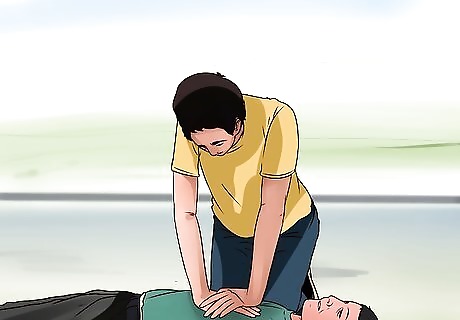
Remember to check ABC. In an emergency situation, it is important to assess the victim’s airways, breathing, and circulatory system before performing CPR. This procedure is also known as ABC. You can assess these things by doing the following: Check the victim’s airway. Look for any obstructions or signs of damage. Watch to see if the victim is taking spontaneous breaths. If necessary, put your ear close to the victim’s nose and mouth and listen for any breathing. Never perform CPR if the victim is breathing or coughing. Start CPR if the victim is not breathing. If the patient is not breathing, then start compression-only CPR right away.

Get in position. You, and the victim, will need to be in the proper position to perform CPR. Follow these steps to ensure you are both in the right position for compression: Put the person on their back and tilt their head back. Kneel down next to the victim’s shoulders. Place the heel of one hand over the center of the person's chest, between the nipples. Place your other hand on top of the first hand. Keep your elbows straight and position your shoulders directly above your hands.
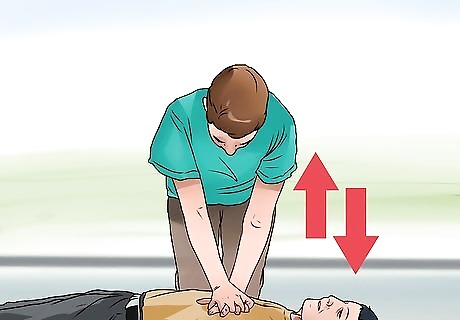
Begin compressions. After positioning yourself properly you may now begin compressions. Compressions can help keep the person alive, keeping oxygenated blood flowing to the brain. Use your upper body weight, not just your arms, as you push straight down on the chest hard and fast. Push at least 2 inches (approximately 5 centimeters). Push hard, at a rate of about 100 compressions a minute. Continue until the victim is breathing again or emergency services arrive. Unless you are a trained medical professional, do compression-only CPR without mouth-to-mouth resuscitation.
Treating Burns

Seek medical treatment for an electrical shock victim. Someone who has suffered even a mild burn from an electrical shock will require medical treatment. Do not attempt to treat the victim on your own. Call emergency services.

Identify burned areas. Burn wounds have certain characteristics that can help you identify them. Look for any injuries on the victim that have one or more the following qualities: Red skin Peeling skin Swelling Blisters Glossy appearance Charred skin (white, brown, or black)
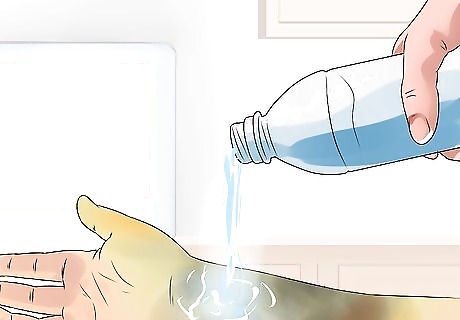
Rinse the burn. Electricity will usually enter the body in one place and leave in another. Inspect as much of the victim as you are able. Once you have identified injuries, rinse the burns with cool water. Make sure that the water is clean to avoid any bacterial infection. Don’t use ice, either cold or hot water, or any creams or greasy liquids on the burn. Burned skin is sensitive to extreme temperatures and creams may cause issues with healing.

Remove clothes and jewelry. It’s important to remove clothes and the jewelry near the burn to avoid further damage. Some clothing or jewelry may still be hot from the electrical shock and can continue to damage the victim. Don’t try to remove melted clothes or pieces of tissue stuck in a wound.

Cover the burn. Covering the burn will help protect the area from any further damage and lower the risk of infection. Use sterile, non-adhesive bandages or clean cloths.

Wait for the emergency services. Once the victim is stabilized, stay with them and try to offer reassurance.Don’t forget to keep the emergency services updated if you’ve treated a burn. Keep your phone with you in case you need to call anyone quickly. Monitor the victim's state as best you can and do not leave them alone.




















Comments
0 comment